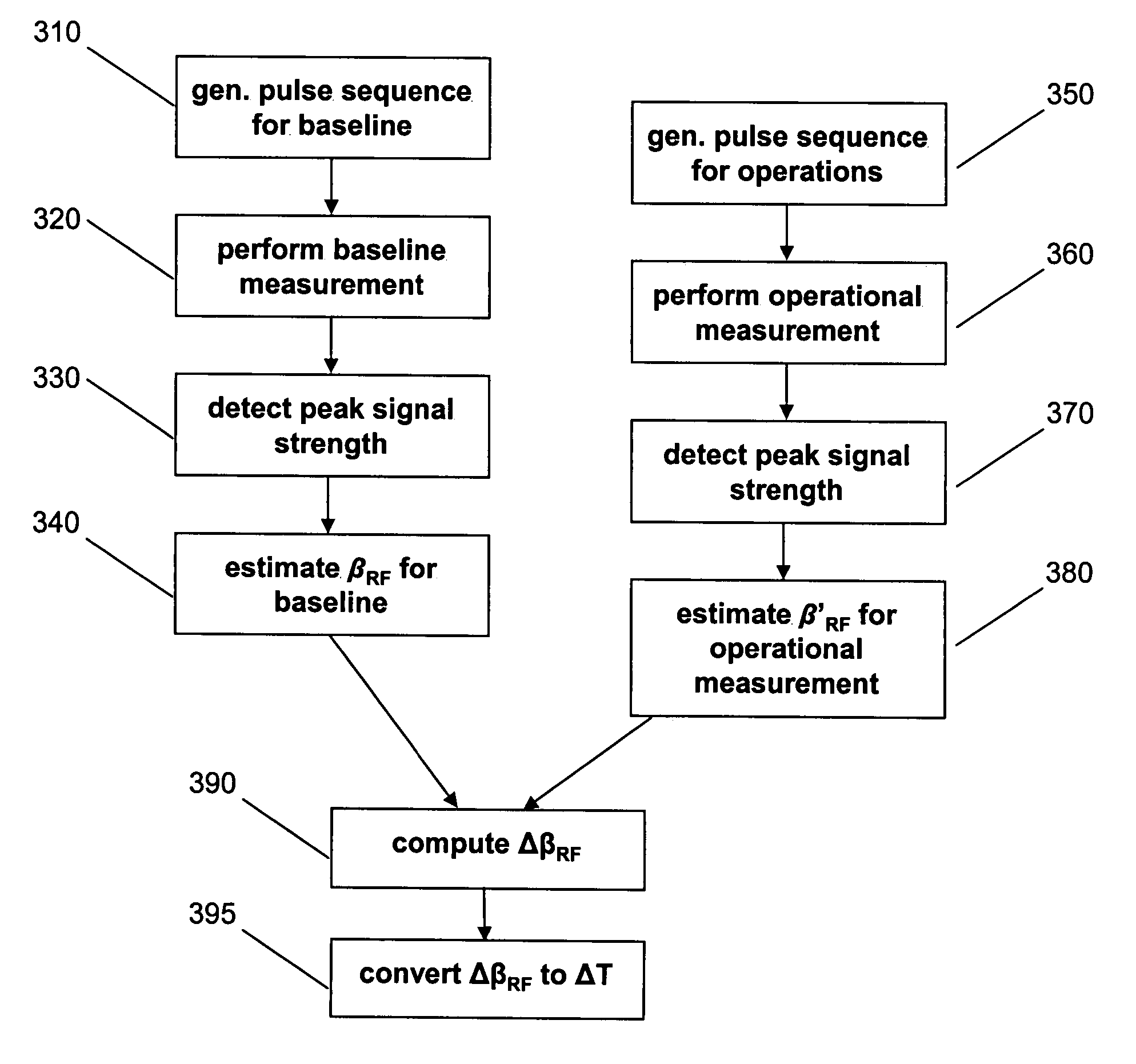Steady state free precession based magnetic resonance thermometry
a magnetic resonance and free precession technology, applied in the field ofsteady state free precession based magnetic resonance thermometry, to achieve the effect of enhancing the effectiveness of thermal therapy, high resolution, and high resolution
- Summary
- Abstract
- Description
- Claims
- Application Information
AI Technical Summary
Benefits of technology
Problems solved by technology
Method used
Image
Examples
Embodiment Construction
[0029]FIG. 1 shows an exemplary MRI system according to the present invention. The system 100 comprises an RF coil 110; a gradient magnet 120; a main magnet 125; an RF transmitter 130; a scanner / spectrometer 140; a computer having a computer readable medium encoded with SSFP processing software 150; and a display 160.
[0030]In this exemplary embodiment, the main magnet 125 provides a uniform primary magnetic field, while the gradient magnet 120 provides known inhomogeneities that may be exploited for spatially encoded information. The SSFP processing software 150 generates and issues commands for the RF transmitter 130 to transmit a specific RF pulse sequence to the RF coil 110. The RF energy from the RF coil passes through the target tissue 170. The RF coil 110 subsequently serves as an RF antenna, sensing the MR response of the target tissue 170 to the transmitted RF pulses. The scanner / spectrometer detects the RF energy returned from the target tissue 170 though the RF coil 110, a...
PUM
 Login to View More
Login to View More Abstract
Description
Claims
Application Information
 Login to View More
Login to View More - R&D
- Intellectual Property
- Life Sciences
- Materials
- Tech Scout
- Unparalleled Data Quality
- Higher Quality Content
- 60% Fewer Hallucinations
Browse by: Latest US Patents, China's latest patents, Technical Efficacy Thesaurus, Application Domain, Technology Topic, Popular Technical Reports.
© 2025 PatSnap. All rights reserved.Legal|Privacy policy|Modern Slavery Act Transparency Statement|Sitemap|About US| Contact US: help@patsnap.com



